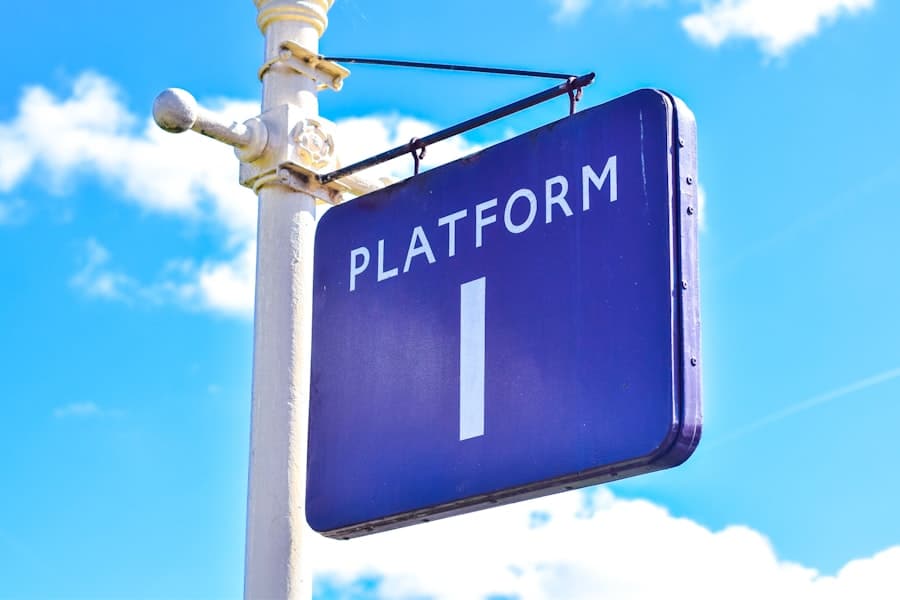As we advance into 2025, the landscape of cloud security has evolved dramatically, driven by the rapid adoption of cloud computing across various sectors. Organizations are increasingly migrating their operations to the cloud, attracted by the promise of scalability, flexibility, and cost-effectiveness. However, this shift has also introduced a myriad of security challenges that must be addressed to protect sensitive data and maintain trust with customers.
The complexity of cloud environments, coupled with the sophistication of cyber threats, necessitates a robust approach to security that encompasses not only technology but also policies and practices. In this context, cloud security in 2025 is characterized by a multi-layered defense strategy that integrates advanced technologies such as artificial intelligence (AI) and machine learning (ML) to enhance threat detection and response capabilities. Organizations are investing in comprehensive security frameworks that encompass identity management, data protection, and compliance with regulatory standards.
As cyber threats continue to evolve, the need for continuous monitoring and adaptive security measures becomes paramount. This article delves into the current state of cloud security, comparing leading cloud platforms, examining security features, and exploring best practices for safeguarding data in the cloud.
Key Takeaways
- Cloud security in 2025 is a critical concern for businesses due to the increasing reliance on cloud platforms for data storage and processing.
- The top cloud platforms, including AWS, Azure, and Google Cloud, offer varying security features and protocols, making it essential for businesses to carefully compare and choose the most suitable platform for their needs.
- Data encryption and privacy measures are crucial components of cloud security, and businesses should ensure that their chosen cloud platform provides robust encryption and privacy features to protect sensitive data.
- Compliance with regulatory standards such as GDPR and HIPAA is essential for businesses operating in specific industries, and cloud platforms should offer compliance features to meet these standards.
- User authentication and access control are vital for preventing unauthorized access to sensitive data, and businesses should implement strong authentication and access control measures on their chosen cloud platform.
Comparison of Top Cloud Platforms
The cloud computing market is dominated by several key players, each offering unique features and capabilities that cater to different organizational needs. Amazon Web Services (AWS), Microsoft Azure, and Google Cloud Platform (GCP) are among the most prominent platforms, each with its strengths and weaknesses in terms of security. AWS, for instance, is renowned for its extensive range of services and robust security features.
It provides a shared responsibility model where AWS manages the security of the cloud infrastructure while customers are responsible for securing their applications and data. Microsoft Azure, on the other hand, emphasizes integration with existing enterprise systems and offers a comprehensive suite of security tools. Azure’s Security Center provides unified security management and advanced threat protection across hybrid cloud environments.
Google Cloud Platform distinguishes itself with its focus on data analytics and machine learning capabilities while maintaining a strong commitment to security. GCP employs a zero-trust security model that assumes threats can originate from both inside and outside the network, thereby enforcing strict access controls and continuous verification. When comparing these platforms, organizations must consider factors such as compliance requirements, ease of integration with existing systems, and the specific security features offered.
For example, AWS provides extensive compliance certifications, making it suitable for industries with stringent regulatory requirements. In contrast, Azure’s seamless integration with Microsoft products can be advantageous for organizations already entrenched in the Microsoft ecosystem. GCP’s innovative approach to data security may appeal to organizations looking to leverage advanced analytics while ensuring robust protection against threats.
Security Features and Protocols

The security features offered by cloud platforms are critical in safeguarding data and applications from unauthorized access and cyber threats. Key features include identity and access management (IAM), encryption, network security protocols, and threat detection mechanisms. IAM solutions enable organizations to define user roles and permissions, ensuring that only authorized personnel can access sensitive information.
Multi-factor authentication (MFA) is increasingly being adopted as a standard practice to add an additional layer of security beyond traditional username and password combinations. Encryption is another cornerstone of cloud security protocols. Data at rest and in transit must be encrypted to prevent unauthorized access during storage or transmission.
Leading cloud providers offer various encryption options, including server-side encryption for data stored in the cloud and client-side encryption for data before it is uploaded. Additionally, many platforms support industry-standard encryption protocols such as TLS (Transport Layer Security) to secure data in transit. Network security protocols play a vital role in protecting cloud environments from external threats.
Firewalls, intrusion detection systems (IDS), and virtual private networks (VPNs) are commonly employed to create secure network boundaries. Advanced threat detection technologies leverage AI and ML algorithms to identify anomalies in network traffic patterns, enabling organizations to respond swiftly to potential breaches. By implementing these security features and protocols, organizations can significantly reduce their risk exposure in the cloud.
Data Encryption and Privacy Measures
Data encryption is a fundamental aspect of cloud security that ensures sensitive information remains confidential even if it falls into the wrong hands. In 2025, organizations are expected to adopt more sophisticated encryption techniques that go beyond traditional methods. Homomorphic encryption, for instance, allows computations to be performed on encrypted data without needing to decrypt it first.
This capability enables organizations to leverage cloud computing resources while maintaining strict control over their sensitive information. Privacy measures are equally important in the realm of cloud security. With increasing scrutiny over data privacy regulations such as the General Data Protection Regulation (GDPR) and the California Consumer Privacy Act (CCPA), organizations must implement robust privacy policies that govern how data is collected, stored, and processed in the cloud.
This includes obtaining explicit consent from users before collecting their data and providing transparency regarding how their information will be used. Moreover, organizations are increasingly adopting data masking techniques to protect sensitive information during development and testing phases. By replacing sensitive data with anonymized values, organizations can ensure that developers have access to realistic datasets without exposing actual customer information.
This approach not only enhances privacy but also mitigates the risk of data breaches during software development processes.
Compliance and Regulatory Standards
Compliance with regulatory standards is a critical consideration for organizations operating in the cloud. In 2025, businesses must navigate a complex landscape of regulations that vary by industry and region. The importance of adhering to standards such as GDPR, HIPAA (Health Insurance Portability and Accountability Act), PCI DSS (Payment Card Industry Data Security Standard), and others cannot be overstated.
Non-compliance can result in severe penalties, reputational damage, and loss of customer trust. Cloud service providers play a crucial role in helping organizations achieve compliance by offering tools and resources designed to meet regulatory requirements. For example, many platforms provide compliance certifications that demonstrate adherence to industry standards.
AWS offers compliance programs that cover various regulations, while Azure provides compliance blueprints tailored to specific industries such as healthcare or finance. Organizations must also implement internal policies and procedures that align with regulatory requirements. This includes conducting regular audits, maintaining detailed records of data processing activities, and ensuring that employees are trained on compliance-related matters.
By fostering a culture of compliance within the organization and leveraging the resources provided by cloud service providers, businesses can mitigate risks associated with regulatory non-compliance.
User Authentication and Access Control

User authentication and access control mechanisms are essential components of cloud security strategies in 2025. As organizations increasingly rely on remote workforces and third-party vendors, ensuring that only authorized users have access to sensitive data becomes paramount. Traditional username-password combinations are no longer sufficient; therefore, organizations are adopting more advanced authentication methods.
Multi-factor authentication (MFA) has emerged as a standard practice for enhancing user authentication processes.
Additionally, biometric authentication methods such as fingerprint scanning or facial recognition are gaining traction as they offer a higher level of security.
Access control policies must also be carefully defined to ensure that users have appropriate permissions based on their roles within the organization. Role-based access control (RBAC) allows administrators to assign permissions based on user roles rather than individual identities, streamlining the management of access rights. Furthermore, implementing least privilege principles ensures that users have only the minimum level of access necessary to perform their job functions, thereby reducing the attack surface.
Incident Response and Disaster Recovery
In an era where cyber threats are pervasive, having a well-defined incident response plan is crucial for organizations leveraging cloud services. An effective incident response strategy outlines procedures for detecting, responding to, and recovering from security incidents. In 2025, organizations are expected to adopt more proactive approaches that emphasize preparedness through regular training exercises and simulations.
Incident response teams should be equipped with tools that enable real-time monitoring of cloud environments for potential threats. Automated threat detection systems can alert teams to suspicious activities or anomalies in user behavior, allowing for swift action before a breach escalates. Additionally, organizations should establish clear communication channels for reporting incidents internally and externally to stakeholders.
Disaster recovery plans are equally important in ensuring business continuity following a significant incident or outage. Cloud providers often offer disaster recovery solutions that enable organizations to replicate critical data across multiple geographic locations. This redundancy ensures that even if one data center experiences an outage or breach, operations can continue seamlessly from another location.
Regular testing of disaster recovery plans is essential to ensure their effectiveness when faced with real-world scenarios.
Conclusion and Recommendations
As we navigate the complexities of cloud security in 2025, organizations must remain vigilant in their efforts to protect sensitive data from evolving threats. A comprehensive approach that encompasses advanced technologies, robust policies, and continuous monitoring is essential for safeguarding cloud environments. Organizations should prioritize investing in user education regarding security best practices while leveraging the capabilities offered by leading cloud platforms.
Furthermore, staying informed about emerging trends in cybersecurity will enable organizations to adapt their strategies proactively. By fostering a culture of security awareness within their teams and collaborating closely with cloud service providers on compliance matters, businesses can build resilient infrastructures capable of withstanding cyber threats while maintaining customer trust in an increasingly digital world.
In the rapidly evolving landscape of cloud technology, security remains a paramount concern for businesses and individuals alike. The article “Review: The Most Secure Cloud Platforms of 2025” delves into the latest advancements and features that make certain platforms stand out in terms of security. For those interested in how technology is reshaping other aspects of our lives, you might find it intriguing to explore how wearables are influencing professional environments. Check out this related article on how smartwatches are revolutionizing the workplace, which discusses the integration of smart technology in enhancing productivity and security in modern work settings.
FAQs
What are the most secure cloud platforms of 2025?
The most secure cloud platforms of 2025 include Amazon Web Services (AWS), Microsoft Azure, Google Cloud Platform, IBM Cloud, and Oracle Cloud.
What security features do these cloud platforms offer?
These cloud platforms offer a range of security features including data encryption, identity and access management, network security, compliance certifications, and threat detection and response.
How do these cloud platforms protect against data breaches and cyber attacks?
These cloud platforms use advanced security measures such as encryption, multi-factor authentication, secure network protocols, and continuous monitoring to protect against data breaches and cyber attacks.
What compliance certifications do these cloud platforms have?
These cloud platforms have various compliance certifications such as ISO 27001, SOC 2, HIPAA, PCI DSS, and GDPR, ensuring that they meet industry-specific security and privacy standards.
How do these cloud platforms ensure data privacy?
These cloud platforms ensure data privacy through features such as data encryption, access controls, data residency options, and privacy compliance certifications.
What are the benefits of using these secure cloud platforms?
The benefits of using these secure cloud platforms include improved data security, compliance with industry regulations, reduced risk of data breaches, and enhanced protection against cyber threats.

